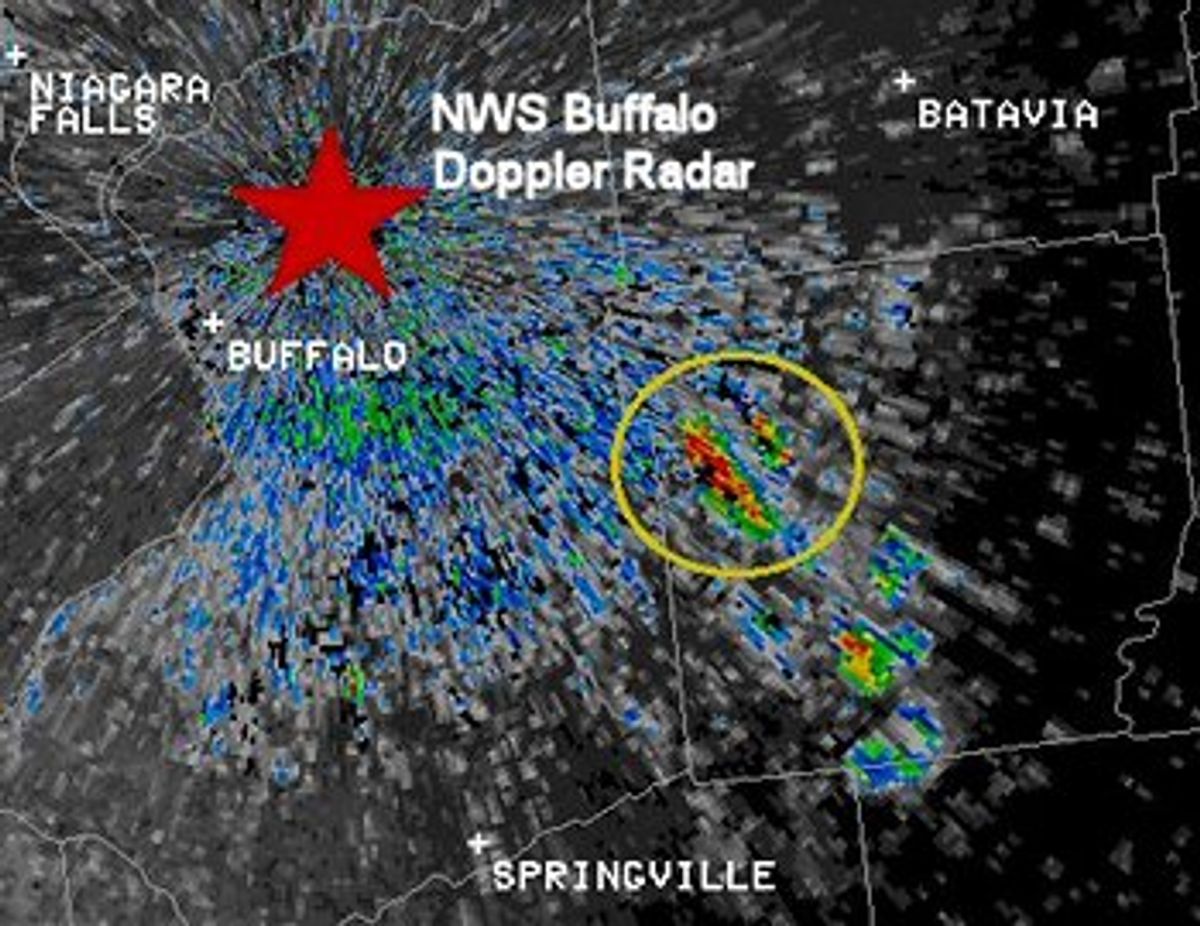Spinning wind turbine blades create a “cone of silence” above the turbines, making it difficult for 2-D radar systems to see aircraft as they fly overhead. It can also create false positives on radar that can look like weather systems (photo). According to Gary Seifert of the Idaho National Laboratory speaking at the RETECH conference in Washington, close to 10,000 MW of wind power has been held up or abandoned completely because of conflicts with FAA, DoD or Department of Homeland Security radar system concerns.
There is ample reason to believe, however, that this type of problem can be overcome. In the United Kingdom, Raytheon was recently awarded a contract by the British National Air Traffic Services (NATS) to develop “clutter erasure” algorithms whereby radar can differentiate between a spinning turbine and an airplane. The company has already completed a feasibility study began in 2006, in which they determined five methods that could now or with future radar systems eliminate the turbine-generated noise.
One of these methods, called concurrent beam processing increased the chances of detection of an aircraft by more than 16 percent in tests at the Altamont Pass wind farm in California. Dual beam radar systems alternate between a lower-angle and higher-angle radar signal, but by processing the two beams at the same time a higher degree of accuracy was achieved.
Radar’s uneasy relationship with wind power doesn’t stop solely at the ability to track aircraft. The much more high-profile complaint about wind farms has been their potential for bird and bat deaths. In order to track bird populations especially around offshore wind farms where simply counting is difficult, the use of radar has been proposed; but radar, of course, doesn’t do so great around the turbines.
A paper by researchers with the radar systems developer DeTect published in Marine Pollution Bulletin in October outlined a wide array of problems radar tracking of birds will face in offshore locations, and a major one is “turbine shadow,” or the turbine’s own radar reflectivity hiding the birds the radar is meant to track.
One of the proposed solutions for such a problem is similar to one of Raytheon’s methods: the use of tracking algorithms. This would allow birds that entered a turbine’s “blackout zone” to be tracked until they left the zone; technical issues do still remain with this fix.
Although wind power installations have increased dramatically in recent years, clearly the radar issues will have to be resolved in order to meet the standing goal of having 20 percent of U.S. electricity come from wind by 2030.
Images via NOAA and Wikimedia Commons.
Dave Levitan is the science writer for FactCheck.org, where he investigates the false and misleading claims about science that U.S. politicians occasionally make.




